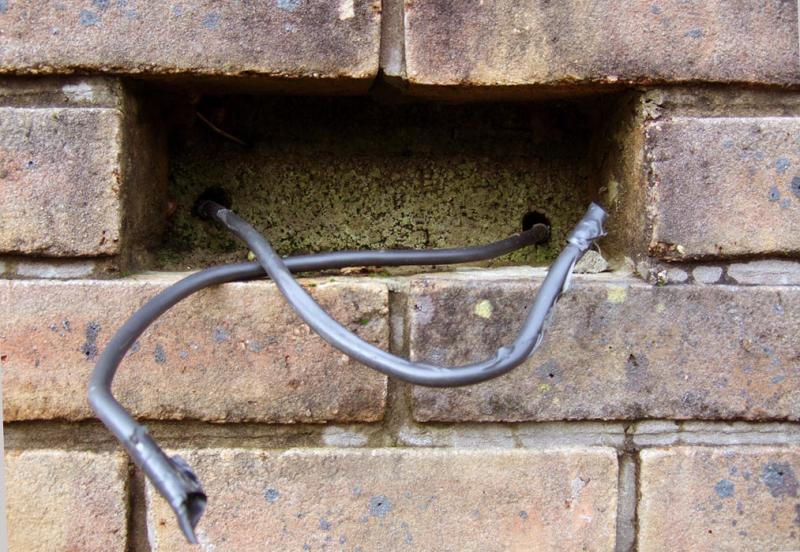<did post in building sect., but no responses - try here>
I have a number of these lights to fit ... 9
http://www.tlc-direct.co.uk/Products/GLBRICK.html
The bricks have been left out at appropriate places in the garden retaining wall runs, the front of wall is face brick, a 30mm or so gap then a 100mm concrete block
The question I have is how to physically fit these lights into the ‘omitted’ bricks space.
There are rear holes in fitting to take screws … but these I assume rely on the rear of the light being in contact with a surface … in this instance there is a gap of around 40mm from the back of the light to the rear skin of block work.
I can’t simply ‘do up, until front of light is set flush with face brickwork, as unless the screws pull the back of the light fitting against something to hold it rigid the whole thing is free to ‘wobble’
I have thought of cutting some stone ‘pads’ to go in, fixing through these .. so in effect using them as spacers … but not easy, and messy.
Each pad would be slightly different thickness … ‘infill space’ varies between 20 & 50 mm.
I did think of taking a common pad thickness and setting these in place with a ‘gripfill’ type of adhesive, at least I could set each pad to correct spacer thickness.
An alternative that a neighbour suggested was fixing the whole thing in with expading polyurethane foam, just seems a nit of a bodge - and risk of getting foam on facebrick
Welcome suggestions.
I have a number of these lights to fit ... 9
http://www.tlc-direct.co.uk/Products/GLBRICK.html
The bricks have been left out at appropriate places in the garden retaining wall runs, the front of wall is face brick, a 30mm or so gap then a 100mm concrete block
The question I have is how to physically fit these lights into the ‘omitted’ bricks space.
There are rear holes in fitting to take screws … but these I assume rely on the rear of the light being in contact with a surface … in this instance there is a gap of around 40mm from the back of the light to the rear skin of block work.
I can’t simply ‘do up, until front of light is set flush with face brickwork, as unless the screws pull the back of the light fitting against something to hold it rigid the whole thing is free to ‘wobble’
I have thought of cutting some stone ‘pads’ to go in, fixing through these .. so in effect using them as spacers … but not easy, and messy.
Each pad would be slightly different thickness … ‘infill space’ varies between 20 & 50 mm.
I did think of taking a common pad thickness and setting these in place with a ‘gripfill’ type of adhesive, at least I could set each pad to correct spacer thickness.
An alternative that a neighbour suggested was fixing the whole thing in with expading polyurethane foam, just seems a nit of a bodge - and risk of getting foam on facebrick
Welcome suggestions.


